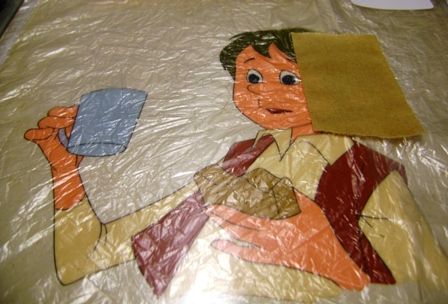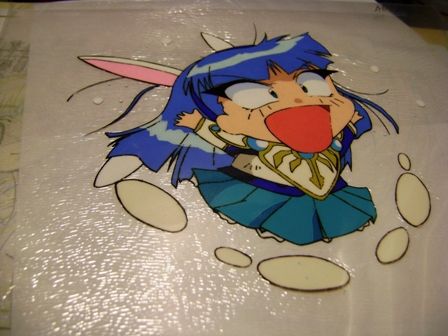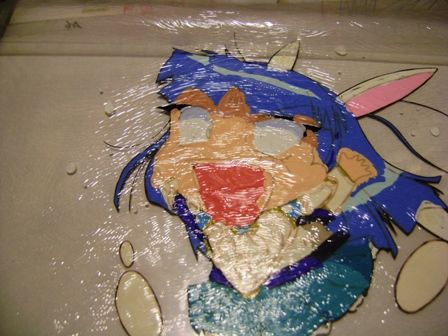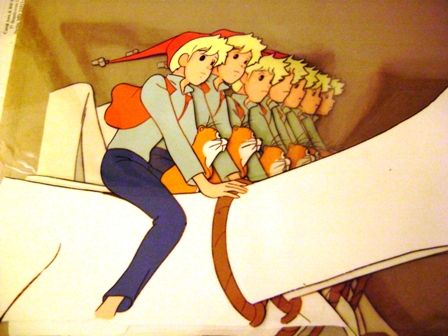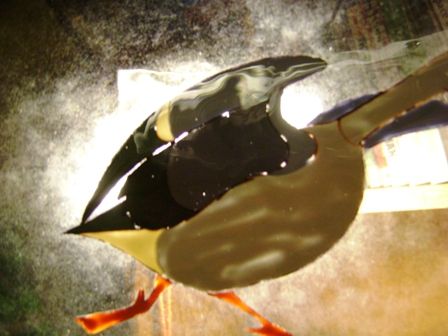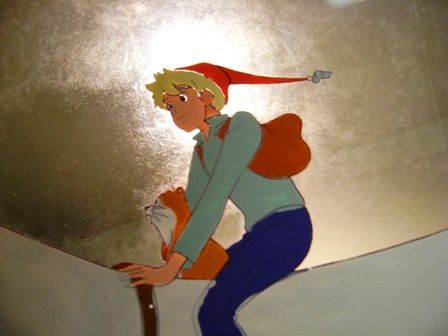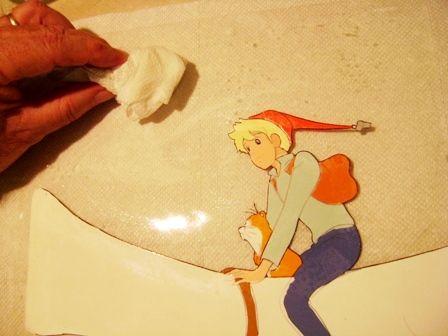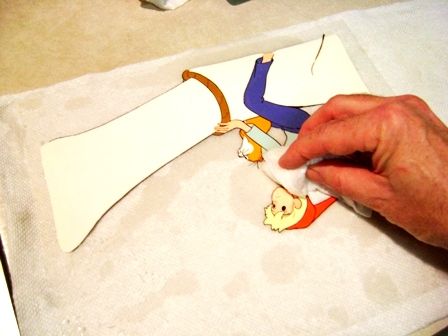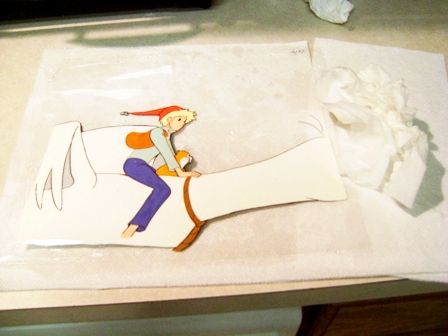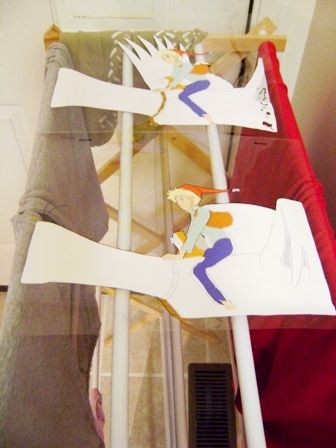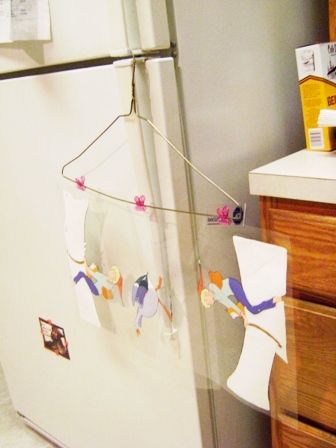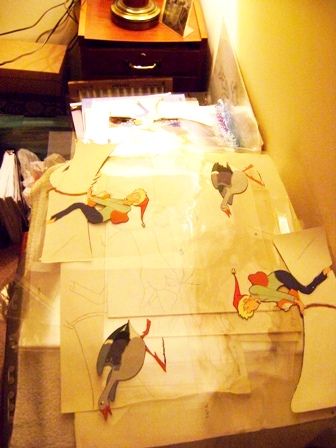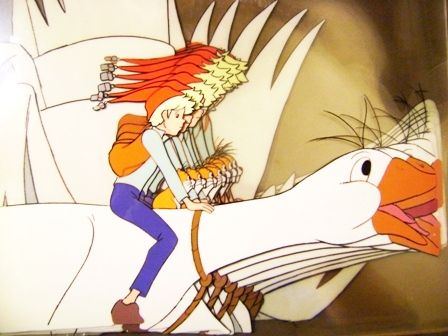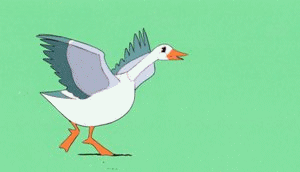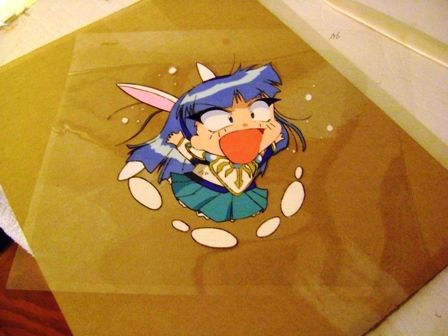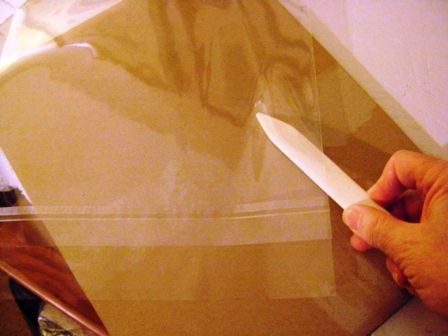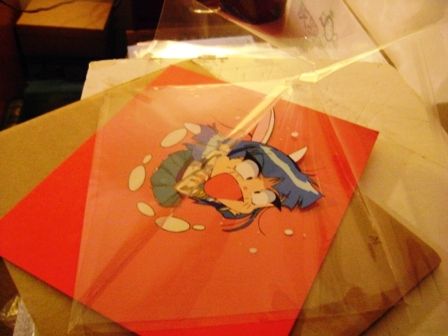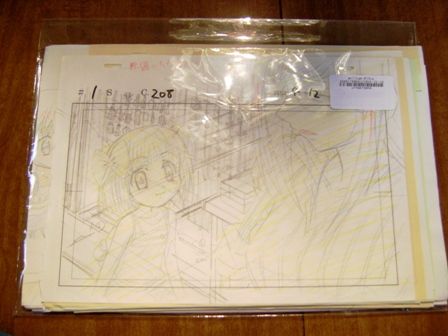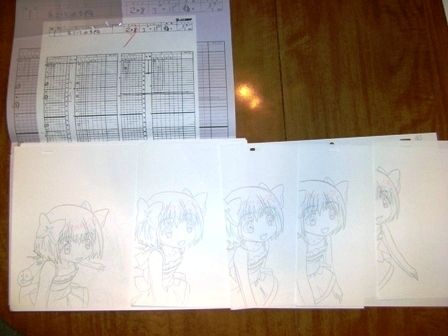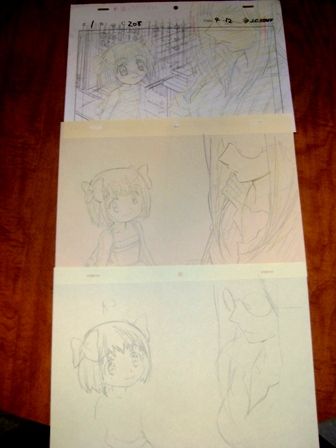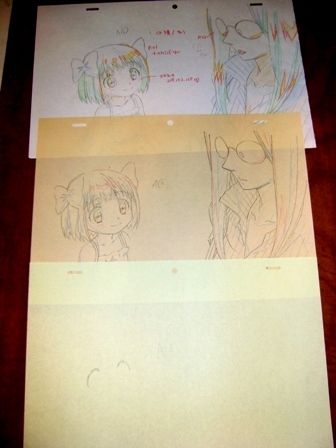Providing some context for "golden age" cels can be a real challenge, particularly when the series is not actually available in any English-language form. But sometimes you get a helpful hint from the studio.
One of the new items is a cel from Mushi's 1970
Andersen Monogatari (The Tales of Hans Christian Andersen), the first 52-episode adaptation of a Western children's classic and the first to show that there was a larger market for Japanese-produced animation.
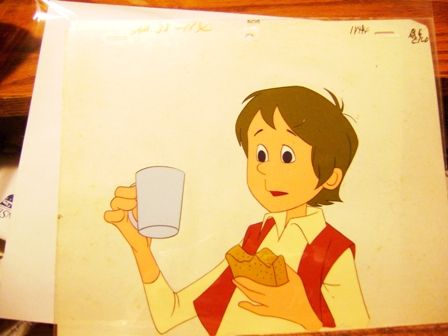
OK, it's a guy holding a mug and eating a piece of bread. Like all
Andersen cels, it's remarkable for its condition: while irretrievably stuck to its douga, it shows no signs of deterioration and looks remarkably sharp. Though this is because Mushi did cels the old way, with the trace lines hand drawn in India ink or some other kind of indelible marker. While the douga is foxed and browned with age, the cel is remarkably young-looking for its forty-five years of age.
And -- yes -- I've seen this lad before. A cel I got in 2013 shows the same character, with the same red vest and surprising deep blue eyes. I couldn't immediately place that cel, but this one offers a bit more information on the top edge of the cel.
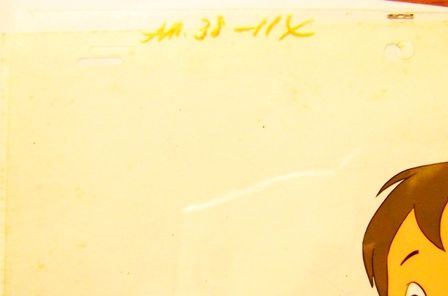
"AM" is obviously "Andersen Monogatari," and the two numbers that follow -- "38 - 114" are crucial to figuring out where it appears. That means "Episode 38, Cut 114," or about a third of the way in. ANN gives a complete episode list, so I learn that this is from the first part of a 3-part adaptation of Andersen's "Ice Maiden." That's a longish tale with a sad ending, not very popular in the West but probably more attractive to a Japanese audience as the supernatural protagonist is a variation on the malicious "Yuki-onna" or "Snow Woman" popular in many legends.
OK, so now I know that the character is Rudy, the poor but intrepid mountain hunter whom the Ice Maiden is determined to get in the end (and does). And as Mushi's adaptation is up on YouTube (in raw Japanese only, alas), it's not hard to get the screen grab.

(Ah, mine has an unmatching mouth layer. Oh, well... And it doesn't take too much longer to look through the other episodes and find my other Rudy cel, which is from Part 3 or Ep. 40.)
Now
Nils Holgersson is a much more difficult task, as there are fewer resources to help track down context. But sometimes the celga-no-kami cut you a little slack.
One of my new Nils lots contained four disconnected cels from a cut that shows our hero (and his ditzy sidekick Carrot) riding on gooseback -- but the goose is clearly not Mårten but the leader of the migrating flock, the wizened matriarch Akka.
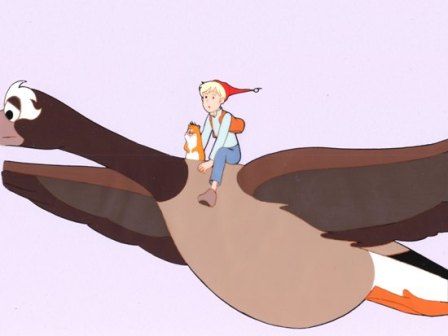
(Those white eyebrows are Akka's distinguishing trademark.)
And then, somehow, Nils gets drowsy during the flight and finally flops over into a peaceful, seemingly enjoyable nap.
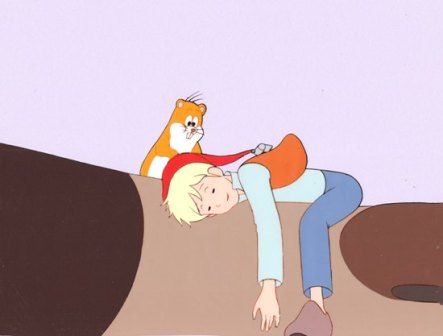
The last of the cels, A78 END, shows that the cut is a long one, and each cel has the cut number on it -- 265 -- which must be toward the end of the adventure. And, happily, the douga for this end key has the last crucial bit written on it.

ANN, again, gives the title of Episode 44 -- "toji komerareta bataki" or "Bataki is trapped." OK, Bataki the Raven is a secondary character in Lagerlöf's original book, but on checking a Japanese site giving brief episode summaries, it does not seem to be a canonical adventure. Briefly, according to the synopsis, the bird gets stuck in a mine hut without any windows, and poor Nils comes to save him but sees no way out but to try to dig through the hut's brick wall. (Hard enough when you're normal sized but a backbreaking task if you're shrunk to the size of a gnome.)
So, as Bataki ("one of the wisest of birds") is a special friend of Akka's, it makes sense that the flock leader would eventually find out what's happened to the raven and come provide needed back-up. And as poor Nils spends most of the episode digging through a brick wall, it's also no wonder that, when they get rescued, practically the first thing he wants to do is take a big nap.
How wise old Bataki gets himself stuck in a shed with no windows is another question. But as he's not in the cel, we can thankfuly leave that to supposition.
Whew. All of this will get much easier when I eventually get to
Asatte no Houkou, where all the sets are repeatedly labeled by episode and cut and for which a good commercial subbed version is available.
